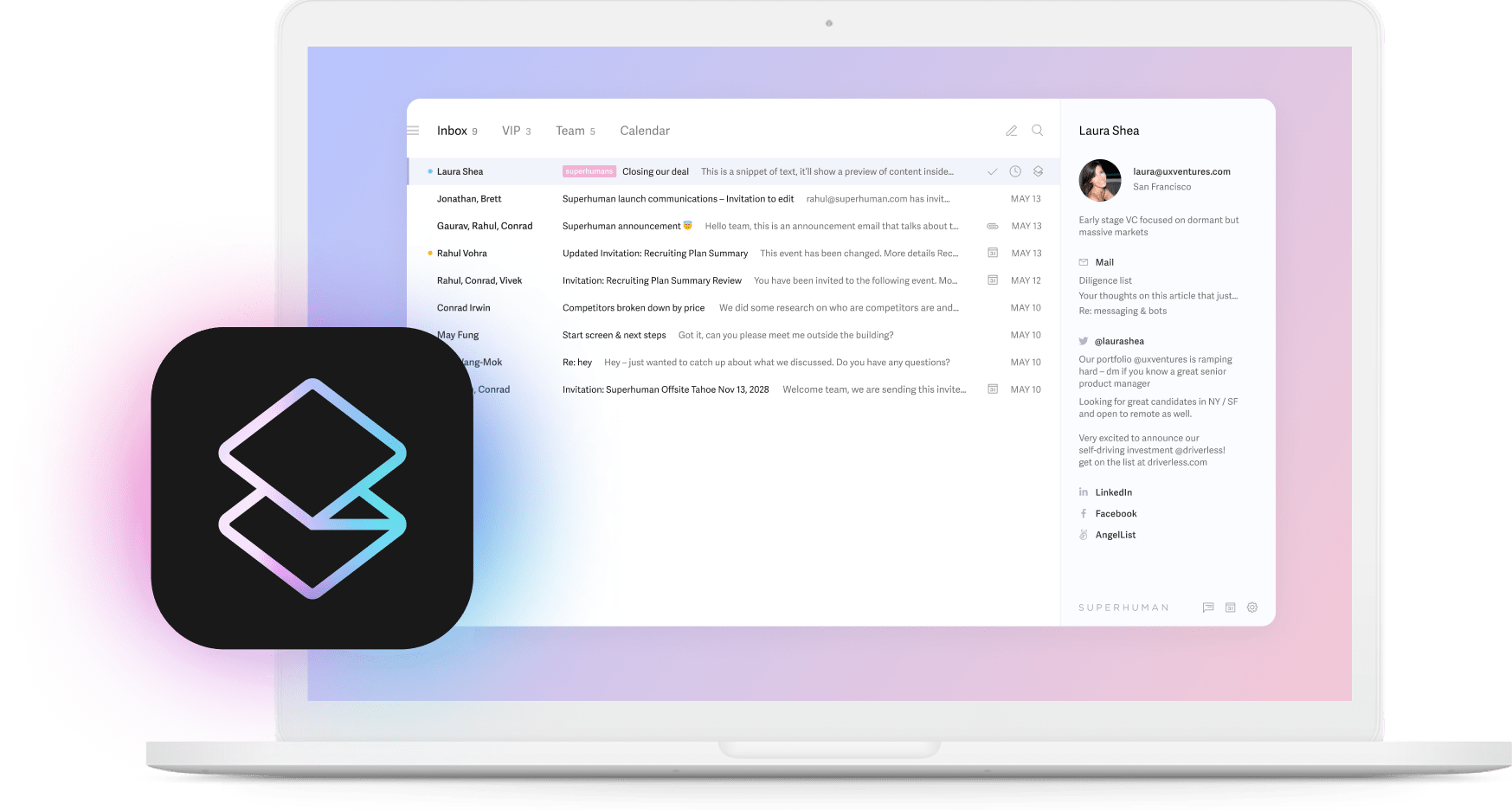
You know that sinking feeling when your team is spinning its wheels? Everyone's busy, but nothing seems to get done? There's a good chance you're mixing up workflows and processes — and it's costing you big time. People now spend a significant portion of their workday drowning in emails, calendar invites, and Slack messages instead of doing actual work.
Many teams make the mistake of trying to fix workflow problems with process solutions (and vice versa). The result? Everything grinds to a halt. It's like showing up to a basketball game with hockey equipment — they're simply playing the wrong sport.
Now, let's see how to stop the madness and get teams moving again.
Workflow vs process: definitions and key differences
What is a process?
Think of a process as the skeleton of how your company operates — the big-picture framework that keeps everything from collapsing. Processes are the end-to-end series of activities that help you achieve major business goals.
The BPM Institute explains it nicely: processes work at the 30,000-foot view. Take employee onboarding — it spans from the moment someone accepts an offer to when they're fully ramped up. It crosses HR, IT, facilities, and team departments, all with the goal of turning new hires into productive team members.
What is a workflow?
Now zoom in closer. A workflow is how specific tasks get done within that larger process. It's the step-by-step sequence for completing a particular job — the "grab this, click that, send to Sarah" instructions that move things forward.
These day-to-day sequences eat up most of your team's execution time. When your content team moves from draft to published article, they follow a workflow: writing, editing, adding images, getting approvals, and hitting publish.
Workflow vs process: summary of key differences
Here's how they differ:
- Scope: Processes span departments; workflows live within teams
- Flexibility: Processes set the rules; workflows adapt to real-world conditions
- Ownership: VPs and directors own processes; managers and team leads own workflows
- Focus: Processes connect to business strategy; workflows get specific tasks done
- Detail: Processes provide direction; workflows show exact steps
Imagine processes as the highway system and workflows as the specific route you take to work each day. Both get you places, but in very different ways.
Optimization: when to improve a process vs a workflow
Knowing which one to fix can save you months of wasted effort.
Fix your process when:
- Different teams keep getting wildly different results
- Bottlenecks affect multiple departments
- What teams are doing doesn't match what the company needs
- Compliance officers start sending you nervous emails
Companies with clear processes are significantly more likely to hit their goals. Makes sense, right? Implementing effective customer retention strategies is a good example of process optimization that can drive business success.
Fix your workflow when:
- Your team keeps redoing the same work
- You see the same mistakes happening repeatedly
- People keep asking "what happens next?"
- Simple tasks take forever to complete
Teams using optimized workflows gain back a substantial portion of their week — that's almost a full day you're currently losing.
Implementation strategies: from theory to practice
Process implementation blueprint
Start by drawing out what's happening now versus what should happen. Map who's involved and what happens at each stage.
Trying to design processes in isolation is a primary reason they fail. Get representatives from each affected department in a room together. Listen more than you talk.
Transformation efforts are far more successful when leaders actively support the change rather than just approving it.
Don't roll everything out at once. Companies that maximize value during implementation are twice as likely to succeed compared to those who try a big-bang approach. Small wins build momentum.
Workflow deployment methodology
Visual maps of current vs. ideal states help everyone see what needs to change. Seriously — drawing pictures can significantly reduce implementation time.
The secret sauce? Ask the people who do the work daily. They'll spot practical problems that leaders miss every time. For instance, when a user streamlined his email management, he uncovered practical issues that software alone couldn't solve.
Teams using continuous improvement report much higher satisfaction with their systems than those who "set and forget." For instance, incorporating email marketing list-building strategies can refine marketing workflows for better results.
Most importantly, give teams both the tools and permission to adjust their own workflows.
Technology enablers: modern tools for modern challenges
Process management platforms
Business Process Management (BPM) platforms give you visibility across your organization. They're great for modeling, compliance tracking, and standardization.
Solid options include Appian, which specializes in low-code process automation for big organizations, and Nintex, known for powerful visualization capabilities.
Microsoft Power Automate works well if you're already a Microsoft shop — the integrations are seamless.
The right process tool can deliver both speed and consistency, enabling organizations to maintain compliance requirements while significantly reducing processing times.
Workflow automation solutions
Workflow tools handle the day-to-day action, creating automated paths for specific tasks.
Superhuman transforms your inbox — where you're probably spending a substantial part of your day — into something actually manageable. It learns your writing style and adapts to you, making email feel significantly lighter. Implementing AI in email marketing can lead to substantial productivity gains. Sales teams can make use of email snippets for sales teams to speed up communication and enhance productivity.
Try SuperhumanFor connecting different systems, Zapier lets you build automated workflows between tools without coding anything. Kissflow offers workflow automation with built-in analytics to spot bottlenecks.
There's also a variety of sales tech solutions that can boost your team's efficiency. Utilizing the best sales productivity tools can help your team ramp up earnings by automating key processes.
Additionally, optimizing your communication setup can enhance collaboration. Learning how to optimize your Zoom setup ensures effective virtual meetings. Using productivity extensions for Google Chrome can also streamline daily tasks and save time.
The results speak volumes: Workato customers automate an average of 60+ hours of manual work weekly, while sales teams leveraging AI tools for sales prospecting significantly improve their success rates and efficiency.
Measurement and continuous improvement
Process metrics
Good process measurement connects what you're doing to business outcomes. Track things like:
- Compliance rate: How often does the process run as designed?
- Risk incidents: How many compliance or governance issues pop up?
- Customer satisfaction: Are people happier with the end result?
- Cost savings: Are you spending less money overall?
Companies that can actually see their process performance are much more likely to make timely strategic adjustments.
Workflow metrics
Workflow metrics focus on getting stuff done efficiently:
- Cycle time: How long does it take from start to finish?
- Handoff speed: How long do items sit between steps?
- Completion rate: What percentage finishes without exceptions?
- First-pass yield: How often do things get done right the first time?
Teams using real-time workflow analytics find and fix bottlenecks much faster than those relying on manual reporting. Focusing on these metrics helps teams to be effective at work and continually improve their performance.
Common pitfalls and how to avoid them
Over-engineering vs under-defining
Companies swing between extremes: creating 50-page process documents nobody reads, or giving vague instructions like "just make it good."
The sweet spot depends on your team's experience. New teams need more detail; experienced ones need room to apply their expertise.
My advice? Test your documentation with actual users before rolling it out. Can they follow it without asking twenty questions?
Integration gaps
The most dangerous places in your organization are where one team hands work to another. The majority of operational problems happen at these transition points.
Create clear responsibility charts showing exactly where one workflow ends and another begins. Implement what I call "no-drop zones" where ownership overlaps at handoff points — someone's always responsible.
Use tools that connect your systems. Teams with integrated platforms experience significantly fewer handoff errors compared to those using disconnected tools.
Change resistance
Employees resist change mainly because they fear uncertainty and losing control.
Managing change becomes even more critical in remote work environments. Implementing effective strategies for managing remote teams can help mitigate resistance and keep teams cohesive.
Counter this by:
- Highlighting what won't change, not just what will
- Creating quick wins that show immediate benefits
- Providing clear training resources
- Finding internal champions who genuinely believe in the change
Despite what many fear, automation rarely eliminates jobs — it eliminates the boring parts of jobs so people can do more meaningful work.
Creating a unified workflow vs process strategy
The best companies keep processes and workflows distinct while ensuring they work together seamlessly. When facing a problem, ask:
- Is this about execution (workflow) or strategic alignment (process)?
- Are we seeing inconsistent results across teams (process) or inefficiencies within teams (workflow)?
- Do we need executive visibility (process) or team-level optimization (workflow)?
Tools like Superhuman for workflow automation and BPM platforms for process management give you the toolkit needed for operational excellence at all levels.
AI is expected to deliver substantial productivity gains in the coming years. The teams that will thrive are those who know when to design processes for consistency and when to optimize workflows for speed — and have the right tools for both.
The winning formula? Know which problem you're solving, pick the right approach, and give your team the tools to execute. Do that, and you'll leave your competition wondering how you make it look so easy.






